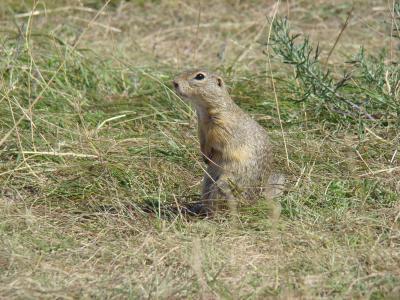A new study on extinction risk has shown that proportions of plant and animal species being classified as threatened on national Red Lists are more closely related to socioeconomic pressure levels from the beginning than from the end of the 20th century. Stefan Dullinger of the University of Vienna and Franz Essl from the Austrian Environment Agency together with an international group of researchers reports this new finding in the current issue of PNAS.
It is well understood that the survival of a substantial and increasing number of species is put at risk by human activity via e.g. habitat destruction, environmental pollution or introduction of alien species. Accordingly, the most recent global IUCN Red List classifies 31% of the 65,518 plant and animal species assessed as endangered. However, the temporal scale of cause-effect relationships is little explored. If extended time lags between human pressure and population decline are common, then the full impact of current high levels of anthropogenic pressures on biodiversity will only be realized decades into the future.

This shows an endangered species: Trifolium saxatile - clover.
(Photo Credit: Copyright: Stefan Dullinger)
Historical legacy of species' population losses
Taking an historical approach, the new study provides circumstantial evidence that such time-lags are indeed substantial. The researchers demonstrate that proportions of vascular plants, bryophytes, mammals, reptiles, dragonflies and grasshoppers facing medium to high extinction risks are more closely matched to country-specific indicators of socio-economic pressures (i.e. human population density, per capita GDP, land use intensity) from the early or mid rather than the late 20th century. Accordingly, their results suggest a considerable historical legacy of species' population losses. In a related analysis they also show that current spending on environmental conservation only has a weak mitigating effect. This finding implies that current conservation actions are effective, but inadequate in scale, to halt species losses.
"The broad taxonomic and geographic coverage indicates that a so-called 'extinction debt' is a widespread phenomenon", says Stefan Dullinger from the University of Vienna. "This inertia is worrying as it implies that albeit numbers of species classified as threatened on Red Lists are increasing continuously and worldwide, these assessments might still underestimate true extinction risks", explains Franz Essl from the Austrian Environment Agency.

This shows Spermophilus citellus - European ground squirrel.
(Photo Credit: Copyright: Wolfgang Rabitsch)
Increase in global conservation effort is urgently needed
Therefore, the scientists write "mitigating extinction risks might be an even greater challenge if temporal delays mean many threatened species might already be destined towards extinction". They expect that minimizing the magnitude of the current extinction crisis might be an even greater challenge when temporal delays are taken into account. Therefore a substantial increase in global conservation effort is urgently needed to conserve species diversity for future generations, warns Dullinger.

This is Onosma helvetica ssp. austriaca.
(Photo Credit: Copyright: Franz Essl)
Source: University of Vienna